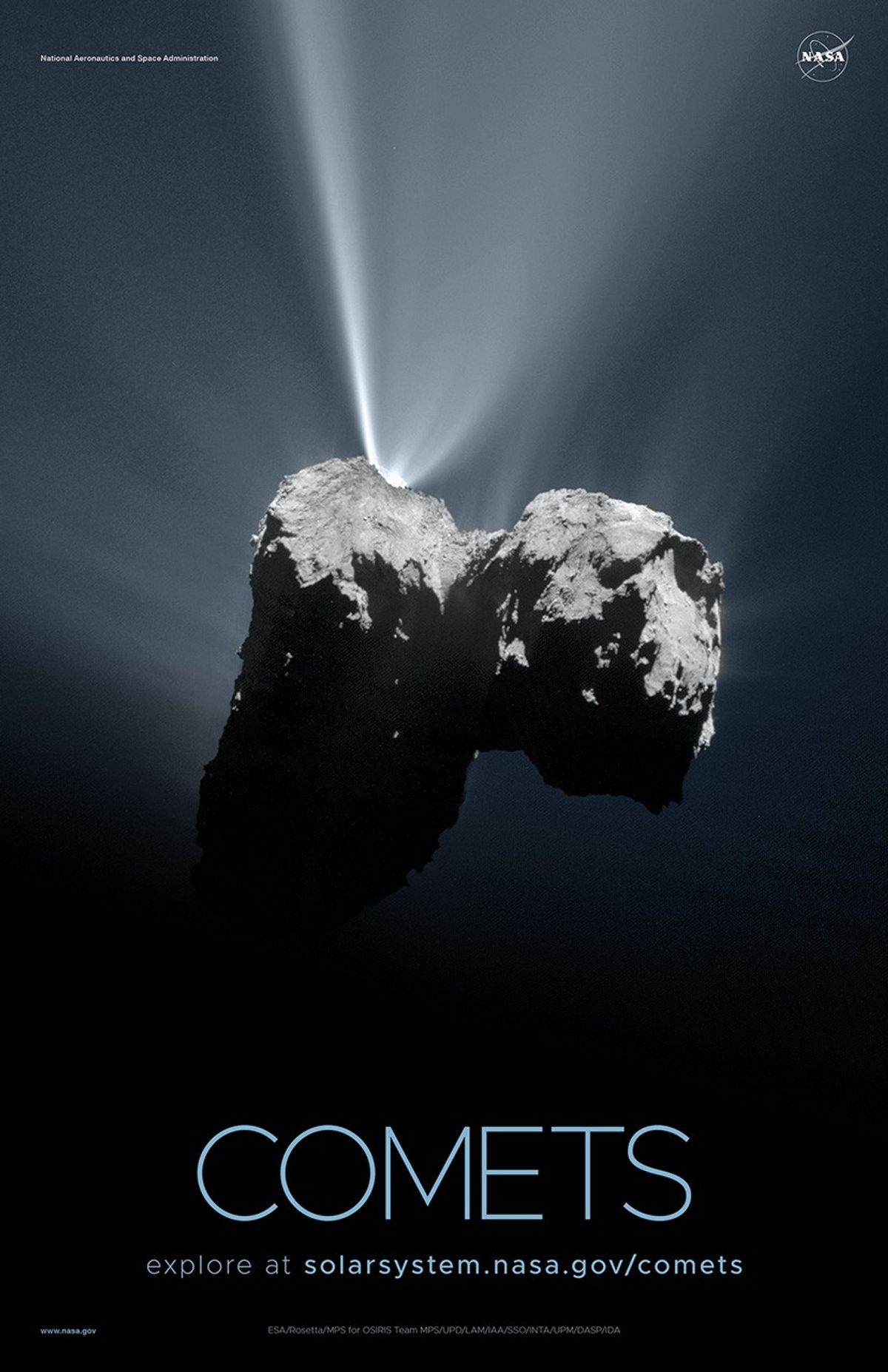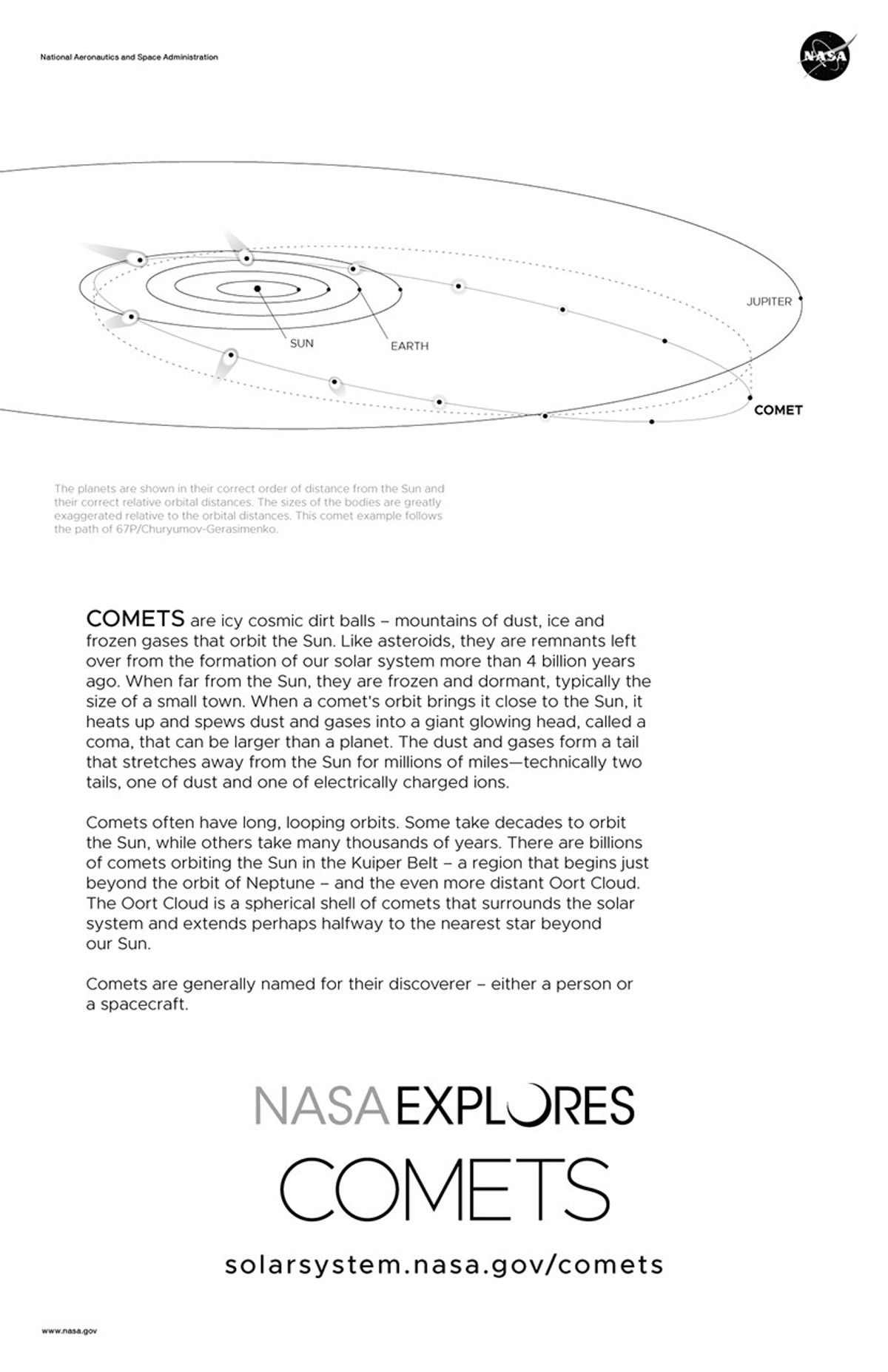Comets Poster – Version B
| Credit | NASA |
|---|---|
| Language |
|
Version B of the comets installment of our solar system poster series.
The posters are best printed on 11x17 paper. Several download options are available below.
About the image: A view of Comet 67P/Churyumov-Gerasimenko based on two images acquired by the European Space Agency's Rosetta mission. Credit: o ESA/Rosetta/MPS for OSIRIS Team MPS/UPD/LAM/IAA/SSO/INTA/UPM/DASP/IDA
On the Back
Comets are icy cosmic dirt balls – mountains of dust, ice and frozen gases that orbit the Sun. Like asteroids, they are remnants left over from the formation of our solar system more than 4 billion years ago.
When far from the Sun, they are frozen and dormant, typically the size of a small town. When a comet's orbit brings it close to the Sun, it heats up and spews dust and gases into a giant glowing head, called a coma, that can be larger than a planet. The dust and gases form a tail that stretches away from the Sun for millions of miles – technically two tails, one of dust and one of electrically charged ions.
Comets often have long, looping orbits. Some take decades to orbit the Sun, while others take many thousands of years. There are billions of comets orbiting the Sun in the Kuiper Belt – a region that begins just beyond the orbit of Neptune – and the even more distant Oort Cloud. The Oort Cloud is a spherical shell of comets that surrounds the solar system and extends perhaps halfway to the nearest star beyond our Sun.
Comets are generally named for their discoverer – either a person or a spacecraft.
Explore comets in depth at https://science.nasa.gov/solar-system/comets/


























